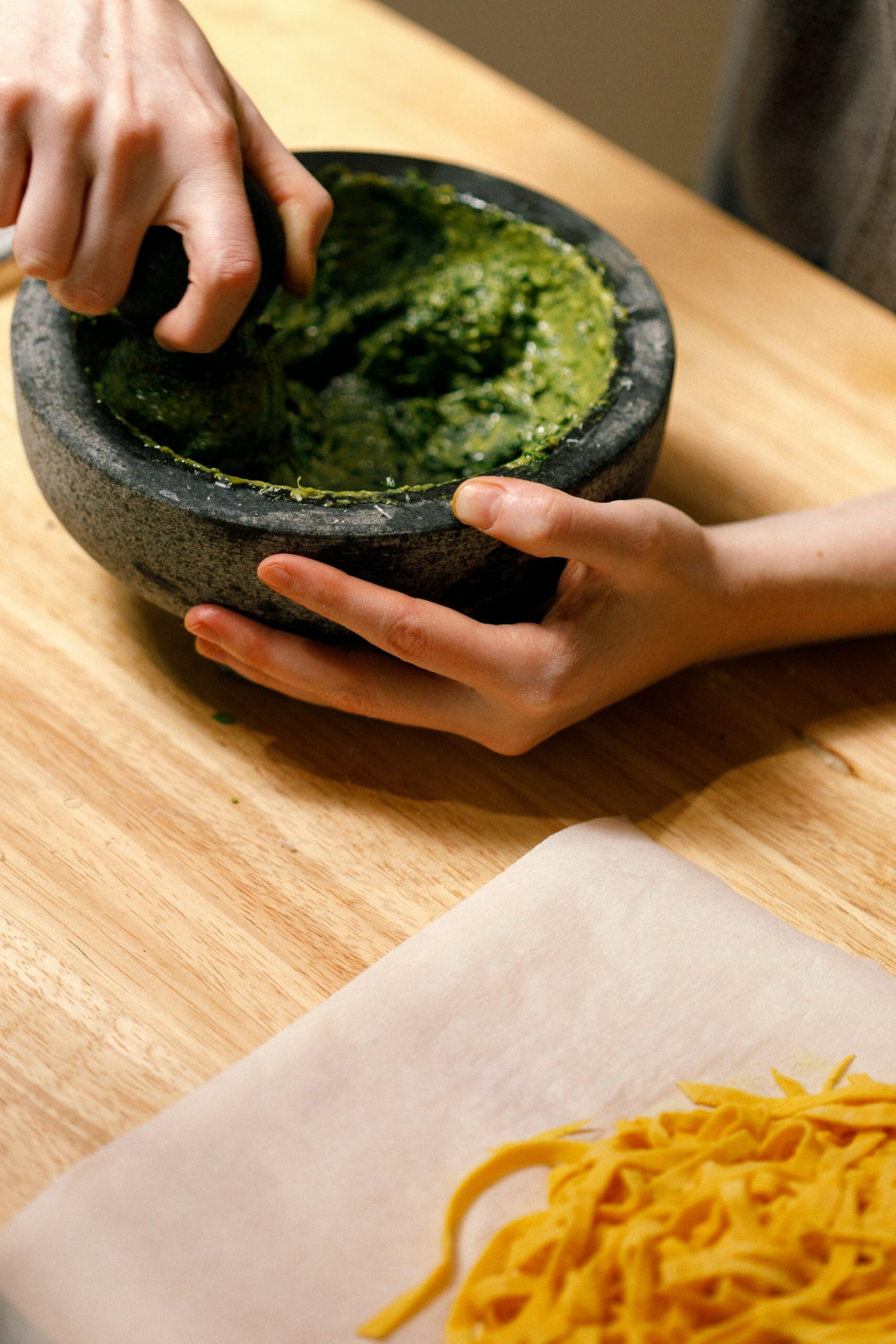
Pesto is a vibrant and aromatic sauce that brings life to a variety of dishes, from pasta to sandwiches. Typically made of basil, garlic, pine nuts, Parmesan cheese, and olive oil, its fresh ingredients are susceptible to spoilage. To maintain the quality and flavor of pesto, proper storage is crucial, and the refrigerator can play a key role in extending its shelf life. It is, therefore, imperative for consumers to understand how long pesto can last when refrigerated and the best practices for storage.
Determining the longevity of pesto in the fridge depends on several factors, including how it’s made and the type of ingredients used. Store-bought pesto, often pasteurized and sealed, tends to have a longer shelf life compared to homemade variants. A common misconception is that pesto can last as long as other jarred condiments, but due to its fresh components, it generally has a shorter lifespan. Recognizing the signs of spoilage, such as an off smell, change in color, or the presence of mold is crucial in avoiding the consumption of spoiled pesto.
Key Takeaways
- Pesto’s shelf life is influenced by its ingredients and method of preparation.
- Refrigeration is essential for preserving the quality and extending the shelf life of pesto.
- Identifying the signs of spoilage is important to ensure the pesto is safe to consume.
Understanding Pesto and Its Varieties
Pesto is a versatile and flavorful sauce that comes in different varieties, with shelf life influenced by its ingredients and whether it is homemade or store-bought.
Homemade vs. Store-Bought Pesto
Homemade pesto typically lacks the preservatives found in store-bought pesto, affecting its longevity. Homemade versions are usually made fresh and can be customized according to personal taste, often resulting in a more vibrant flavor.
- Freshness: Homemade pesto offers a fresher taste but spoils more quickly.
- Preservatives: Store-bought options often contain additives to extend shelf life.
When it comes to store-bought pesto, the presence of preservatives allows it to generally last longer than its homemade counterpart when refrigerated.
Key Ingredients Affecting Pesto Shelf Life
The shelf life of pesto is greatly affected by its key ingredients, such as olive oil, pine nuts, basil, garlic, and Parmesan cheese. Nuts in the pesto can also play a role, but pine nuts are the traditional choice.
- Olive Oil: Acts as a natural preservative due to its fat content, enveloping ingredients and reducing exposure to air.
- Basil: The primary herb in pesto, which can degrade quickly if not stored properly.
- Garlic: Adds flavor but can sometimes ferment when in a mixture like pesto if stored for too long.
- Parmesan Cheese: Helps to bind the pesto and can add to its longevity, but can also spoil if pesto is not properly refrigerated.
- Nuts: Different nuts can be used to change the taste and texture, potentially affecting the sauce’s shelf life.
It is crucial to consider how these ingredients interact with one another as they can influence both the taste and the shelf life of the pesto, with each component contributing to the delicate balance that makes up its distinct flavor and longevity.
Storing Pesto for Maximum Freshness
Proper storage of pesto can significantly extend its shelf life whether in the fridge or freezer. The key is to minimize exposure to air and moisture.
Refrigerating Pesto
When storing pesto in the refrigerator, it should be kept in an airtight container to prevent oxidation, which can lead to spoilage. A thin layer of olive oil poured on top of the pesto can act as a seal to further protect it from air exposure. Pesto can remain fresh in the fridge for 1 to 2 weeks when stored this way.
Steps:
- Transfer pesto to a jar or container.
- Smooth the surface and cover with olive oil.
- Seal tightly with a lid.
- Label the container with the date of storage.
Freezing Pesto
To store pesto for several months, freezing is the most effective method. Pesto can potentially retain its quality in the freezer for up to 6 months. Using an ice cube tray allows for easy portion control upon thawing.
Instructions:
- Fill an ice cube tray with pesto.
- Cover with cling film to prevent freezer burn.
- Once frozen, transfer cubes to a freezer bag or container.
- Label with the date of freezing.
Best Containers for Storage
The ideal container for pesto storage—whether in the fridge or freezer—is crucial to maintain pesto’s freshness and flavor.
Recommendations:
- Glass jars with tight-fitting lids.
- BPA-free plastic containers with airtight seals.
- Freezer bags specifically labeled for food use.
For maximum freshness, proper hygiene and food safety practices should be followed, including using clean utensils when handling pesto and avoiding cross-contamination.
Recognizing Spoiled Pesto
When inspecting pesto for spoilage, it is crucial to look for changes in color and smell before tasting. Recognizing the signs of spoilage is essential for food safety.
Visual and Olfactory Signs
- Color: Fresh pesto usually has a vibrant green color. When spoiled, pesto may exhibit a brown or darker hue due to oxidation and mold growth.
- Mold: If there is visible mold growth, the pesto should not be consumed. Mold can appear as fuzzy or slimy spots of white, blue, green, or black.
- Smell: Pesto should have a fresh, herby scent. A rancid or off smell indicates spoilage, often caused by bacteria.
Health Risks of Spoiled Pesto
Spoiled pesto poses several health risks. Consuming bad pesto can lead to:
- Food Poisoning: Symptoms can include nausea, vomiting, and diarrhea.
- Botulism: Though rare, improperly stored pesto can harbor the bacteria Clostridium botulinum, the cause of botulism, a serious illness.
Duration and Tips to Extend Pesto’s Shelf Life
Pesto’s vibrancy and flavor rely on how well it is stored in the refrigerator. Below are specific preservation methods and lifespan expectations for refrigerated pesto.
Typical Lifespan of Pesto in the Fridge
Unopened pesto typically maintains its quality for 1-3 months past its ‘best by’ date when stored in the refrigerator. Once opened, pesto should ideally be used within 5-7 days to ensure freshness and prevent spoilage. To verify if the pesto remains safe to use, consumers should check for any signs of mold, discoloration, or off odors, as these can indicate spoilage.
Proper Thawing and Usage Techniques
When thawing frozen pesto, it is vital to do so in the refrigerator to maintain a safe temperature. Pesto should never be thawed on the countertop as this can encourage bacterial growth. After thawing, if extra acidity is desired or the pesto appears slightly dull, adding a small amount of fresh lemon juice can brighten the flavor and potentially extend its shelf life. It is always important to use clean utensils when handling pesto to avoid cross-contamination. Pesto is not intended for refreezing once it has been thawed.




